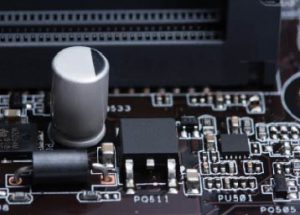
One can never be sure what waits for her in a month or so. Even if there is a well-developed strategy plan and risk analysis, the business arena is full of unexpected events. Being aware of potential challenges coming up on the way, your company can surely be more prepared and take actions to overcome the potential issues. Like in previous years, 2019 is not an exception in terms of challenges and risks for EMS providers. Below, we are discussing some potential challenges that anybody involved in electronics manufacturing services industry should be aware of.
The Brexit
March 2019 is approaching along with uncertainties of the Brexit. Whether Hard Brexit or Soft Brexit, there is certainly an impact on companies operating in and outside the UK, as the overall supply chain will be affected. So, let’s see what potential effects of Brexit on EMS providers are:
-
-
- Imports and exports – In case the UK leaves the EU without any Tariff Agreement, it will lose its tariff free trade status with the EU. That means that tariff will be imposed on imports leading to increase in their costs. So, if you source your electronic components from a EU-based company, you will likely face price increase for the components. You will also have to go through customs on the border and have to plan more time for logistics/delivery.
In the meantime, exports will be affected by tariffs as well, making the exported products from the UK more expensive and less competitive in the international market, especially when standing along with the EU companies.The British pound has also fallen against Euro and U.S. dollar since the referendum. And this has led to increase of prices of imported products as well. - Separate rules and regulations for the UK and EU – Unlike before, the flow of goods and services between the EU countries and the UK will not go smoothly, as the companies will need to meet the UK and EU regulations separately and pay taxes. Of course, it will be obvious only after Brexit what these regulations are. So, watch this space!
- Other countries are affected – not only the EU member countries will be affected, but also companies operating outside the EU. For instance, if the non-EU company has been trading with EU companies, including the UK, and were meeting only the EU regulations, then now, they have to comply with regulatory requirements both in the UK and the EU.If a non-EU company has a branch in the UK, and has been able to transfer products and services throughout the EU, then now, things get harder due to additional and or separate regulatory requirements. Thus, many companies will either close their offices in the UK and move to a EU member country, or will open an office in a EU member country in addition to being based in the UK.
- Imports and exports – In case the UK leaves the EU without any Tariff Agreement, it will lose its tariff free trade status with the EU. That means that tariff will be imposed on imports leading to increase in their costs. So, if you source your electronic components from a EU-based company, you will likely face price increase for the components. You will also have to go through customs on the border and have to plan more time for logistics/delivery.
-
Global shortage of electronic components
This issue has been going on for years, and this problem concerns almost everybody involved in the electronic manufacturing services industry. Now, when there is dynamic growth in automobile industry along with electronics and medical field, there is high pressure on electronic component manufacturers. There is high demand for some types of electronic components, which however leads to shortages. The thing is the manufacturers of these components usually do not invest in increasing their production capacities. They see it as a short-term investment, since the designs and types of these components change almost every year. So, the shortage of the electronic components is still going to be an issue in 2019.
Regulatory requirements
More attention is given to regulatory requirements to make products eco-friendly. There are several laws already governing green production along with international standards, which cover production of PCBs as well. These laws put some restrictions on the amount of hazardous elements that can be used in PCBs. Among these regulations are the EU Regulation on Registration, Evaluation, Authorization and Restriction of Chemicals (REACH) (2007), and the Restriction of the Use of Certain Hazardous Substances (RoHS) in Electrical and Electronic Equipment (EEE) Directive. The latter has also been transferred into the UK law (2013).
You may have to increase your production capacity
Several industries are growing quite fast. Every year, new product designs are invented, which are better, faster and lighter than previous models. This certainly increases the demand for PCBs that you manufacture, and also requires that you increase your production capacity to meet not only the growing demand for PCBs, but also be able to manufacture the proposed designs.
Supply Chain is getting more complex
The supply chain gets more complex than it was a decade ago leading to extra issues and need for attention. This is because the supply of electronic components now involves now not only more than one country, but also regions and continents. In this era of digital development, distance is not an important factor anymore. However, working with companies in different countries means that the companies have to comply with regulatory requirements in the countries of production and consumption separately.
